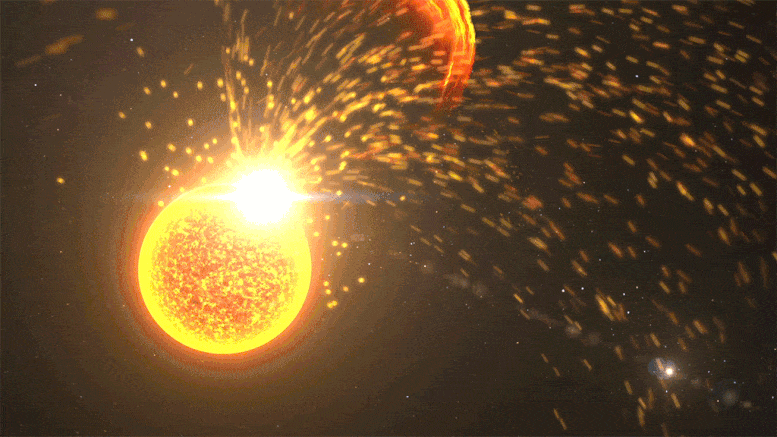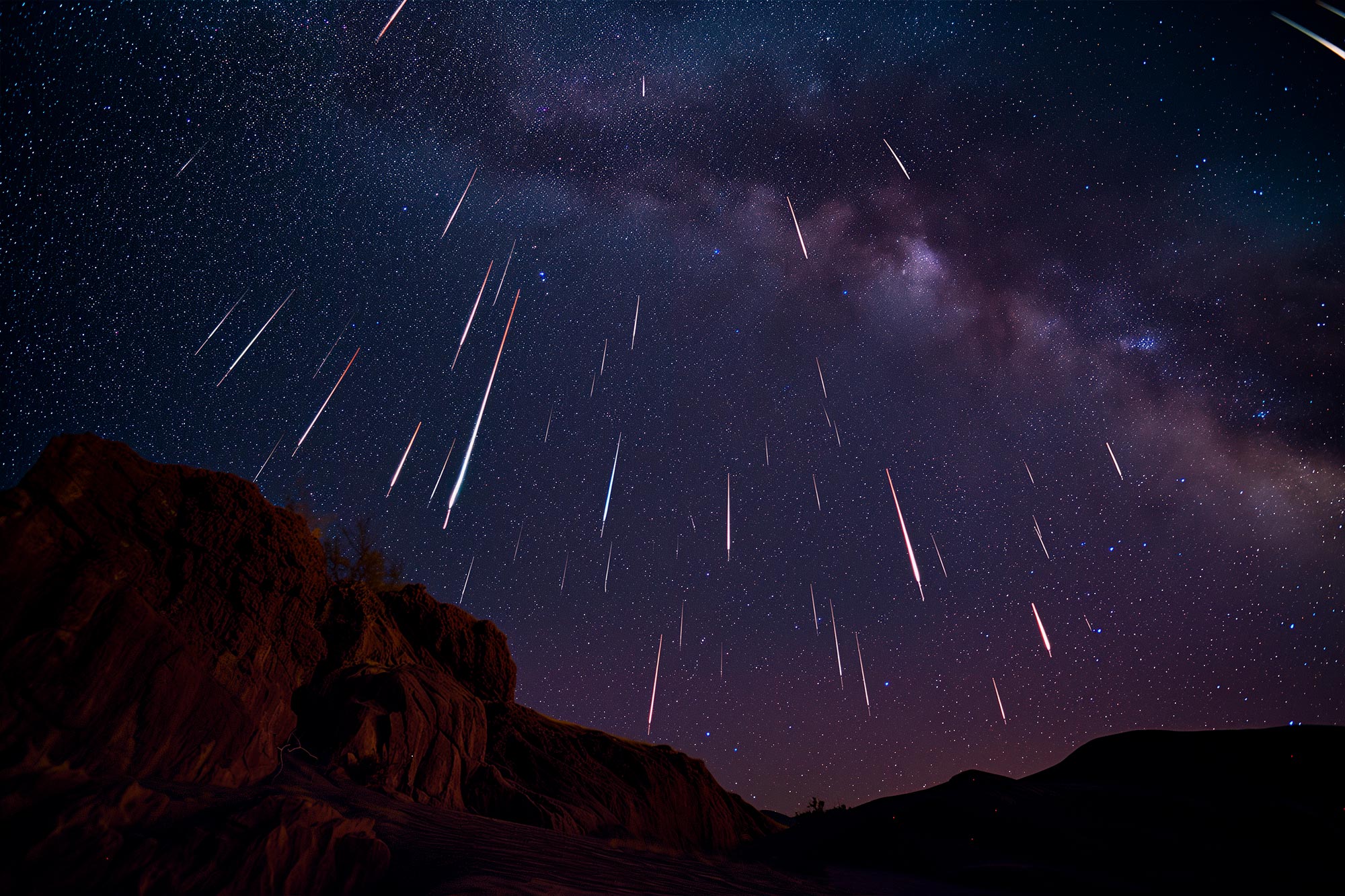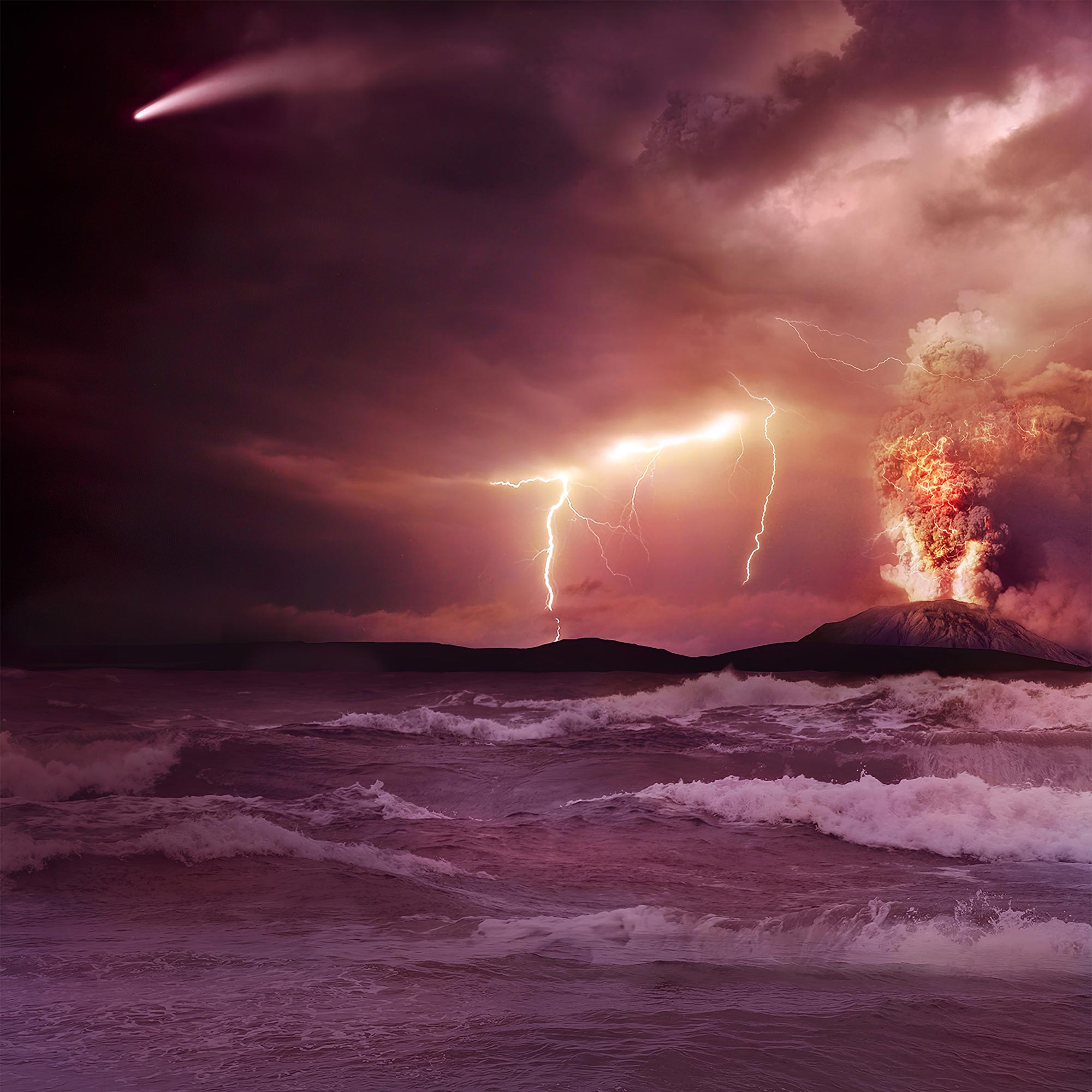最近の研究は、地球上の生命の基本的な成分が太陽の噴火に由来する可能性があることを示しています。 この研究は、太陽の分子と地球の原始大気中のガスとの衝突が、タンパク質と有機生命体の構成要素であるアミノ酸とカルボン酸を生成できることを示しました。 NASA のケプラー ミッションからのデータを使用して、研究者は、初期のスーパーフレア フェーズ中に、太陽からのエネルギー粒子が定期的に大気と相互作用し、基本的な化学反応を開始することを示唆しました。 実験を繰り返した結果、太陽の分子は、アミノ酸とカルボン酸の合成において、稲妻よりも効率的なエネルギー源であることが示されました。 クレジット: NASA/ゴダード宇宙飛行センター
新しい研究は、地球上の生命の最初のビルディングブロック、すなわち[{” attribute=””>amino acids and carboxylic acids, may have been formed due to solar eruptions. The research suggests that energetic particles from the sun during its early stages, colliding with Earth’s primitive atmosphere, could have efficiently catalyzed essential chemical reactions, thus challenging the traditional “warm little pond” theory.
The first building blocks of life on Earth may have formed thanks to eruptions from our Sun, a new study finds.
A series of chemical experiments show how solar particles, colliding with gases in Earth’s early atmosphere, can form amino acids and carboxylic acids, the basic building blocks of proteins and organic life. The findings were published in the journal Life.
To understand the origins of life, many scientists try to explain how amino acids, the raw materials from which proteins and all cellular life, were formed. The best-known proposal originated in the late 1800s as scientists speculated that life might have begun in a “warm little pond”: A soup of chemicals, energized by lightning, heat, and other energy sources, that could mix together in concentrated amounts to form organic molecules.

Artist’s concept of Early Earth. Credit: NASA
In 1953, Stanley Miller of the University of Chicago tried to recreate these primordial conditions in the lab. Miller filled a closed chamber with methane, ammonia, water, and molecular hydrogen – gases thought to be prevalent in Earth’s early atmosphere – and repeatedly ignited an electrical spark to simulate lightning. A week later, Miller and his graduate advisor Harold Urey analyzed the chamber’s contents and found that 20 different amino acids had formed.
“That was a big revelation,” said Vladimir Airapetian, a stellar astrophysicist at NASA’s Goddard Space Flight Center in Greenbelt, Maryland, and coauthor of the new paper. “From the basic components of early Earth’s atmosphere, you can synthesize these complex organic molecules.”
But the last 70 years have complicated this interpretation. Scientists now believe ammonia (NH3) and methane (CH4) were far less abundant; instead, Earth’s air was filled with carbon dioxide (CO2) and molecular nitrogen (N2), which require more energy to break down. These gases can still yield amino acids, but in greatly reduced quantities.
Seeking alternative energy sources, some scientists pointed to shockwaves from incoming meteors. Others cited solar ultraviolet radiation. Airapetian, using data from NASA’s Kepler mission, pointed to a new idea: energetic particles from our Sun.
Kepler observed far-off stars at different stages in their lifecycle, but its data provides hints about our Sun’s past. In 2016, Airapetian published a study suggesting that during Earth’s first 100 million years, the Sun was about 30% dimmer. But solar “superflares” – powerful eruptions we only see once every 100 years or so today – would have erupted once every 3-10 days. These superflares launch near-light speed particles that would regularly collide with our atmosphere, kickstarting chemical reactions.
40 億年前の若い太陽からのエネルギーは、地球の大気中に分子を生成するのに役立ち、分子が生命を宿すのに十分な温度まで加熱されました。 クレジット: NASA のゴダード宇宙飛行センター/Jenna Duberstein
「その論文を発表するとすぐに、横浜国立大学のチームから日本から連絡がありました」と Airapetian 氏は言います。
化学の教授である小林博士は、過去 30 年間、プレバイオティクスの化学を研究してきました。 彼は、銀河宇宙線 (太陽系外からの粒子) が初期の地球の大気にどのように影響したかを理解しようとしていました。 「銀河宇宙線は、粒子加速器などの特殊な装置が必要なため、ほとんどの研究者に無視されています」と小林氏は語った。 「幸運にも、私たちの施設の近くでそれらのいくつかにアクセスできました。」 小林の実験装置にわずかな変更を加えるだけで、Airapetian のアイデアをテストできます。
Airapetian と Kobayashi と彼らの共同研究者は、今日私たちが理解している初期の地球の大気に対応するガスの混合物を作成しました。 彼らは、二酸化炭素、窒素分子、水、およびさまざまな量のメタンを収集しました。 (初期の地球の大気中のメタンの割合は不明ですが、低いと考えられています。)彼らは、ガス混合物を陽子で発射するか (太陽粒子をシミュレート)、火花放電で点火し (雷をシミュレート)、Miller-Urey の実験を繰り返しました。比較。
メタン含有量が 0.5% を超える限り、陽子 (太陽エネルギー粒子) によって放出された混合物は、検出可能な量のアミノ酸とカルボン酸を生成しました。 しかし、火花 (雷) 放電では、アミノ酸がまったく形成される前に、約 15% のメタン濃度が必要です。
「15% のメタンが存在する場合でも、雷によるアミノ酸の生成速度は、陽子の生成速度の 100 万分の 1 です」と Airapetian 氏は付け加えました。 陽子はまた、火花放電によって点火されたものよりも多くのカルボン酸 (アミノ酸の調達者) を生成する傾向があります。

太陽フレア、コロナ質量放出、太陽火山噴火イベントを含む、太陽火山噴火のクローズアップ。 クレジット: NASA のゴダード宇宙飛行センター
他のすべてが等しい場合、太陽粒子は雷よりも効率的なエネルギー源であるように思われます. 他のすべてが等しくない、と Airapetian は示唆した。 Miller と Urey は、現在と同じように「暖かい小さな池」の時代にも稲妻が一般的だったという仮説を立てました。 しかし、上昇する暖かい空気から形成された雷雲から発生する稲妻は、薄暗い日光の下では約 30% まれでした。
「寒い状況では、稲妻が発生することはなく、初期の地球は非常に薄暗い太陽の下にありました」と Airapetian 氏は言います。 「だからといって、雷が発生しないというわけではありませんが、今では雷が発生する可能性は低くなり、太陽粒子が発生する可能性が高くなるようです。」
これらの実験は、私たちの若いエネルギッシュな太陽が、これまで考えられていたよりも簡単に、そしておそらくより早く生命の前駆体を誘発した可能性があることを示唆しています。
参考文献:「若い太陽からの太陽粒子による惑星大気の弱還元におけるアミノ酸とカルボン酸の生成」 小林賢生 伊勢潤一、青木隆平、木下芽衣、内藤浩輝、宇土拓海、バガワティ・コニヴォレ高橋、浩美柴田、三田肇、福田均、小栗義行、川村公孝、貴生川陽子、Vladimir S. Irpetian、2023 年 4 月 28 日 人生.
DOI: 10.3390/life13051103

「音楽マニア。プロの問題解決者。読者。受賞歴のあるテレビ忍者。」







More Stories
みずがめ座イータ流星群、赤色巨星アンタレス、5月の惑星
NASA民間乗組員のボーイング・スターライナーとスペースXドラゴンの比較
日本の保健省は、173社が死亡に関連した酵母原料を供給していたと発表